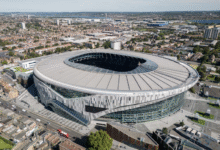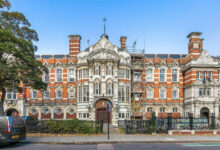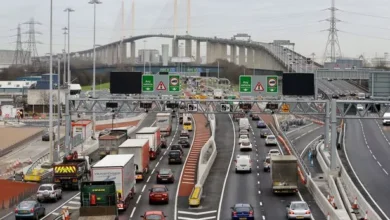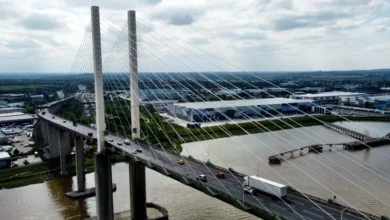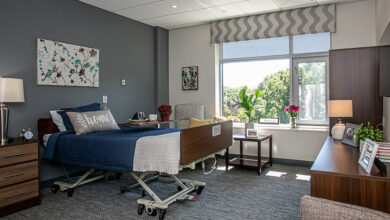Discovering Camberwell: Where Art, History, and Urban Life Meet
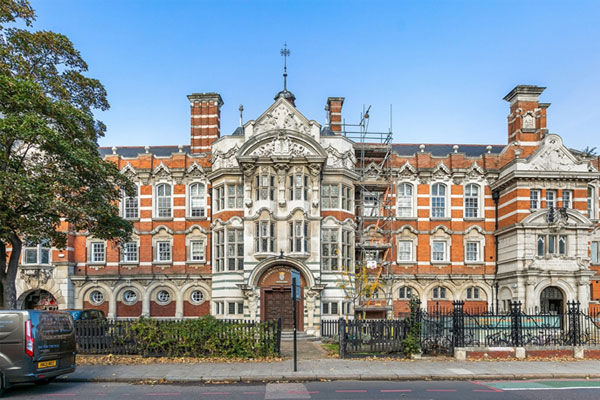
Camberwell is one of those rare gems in London that manages to balance vibrant urban living with deep historical roots and an artistic soul. Nestled in the borough of Southwark, this distinctive district often flies under the radar compared to its flashier neighbors, yet it offers a rich tapestry of culture, architecture, green spaces, and community spirit. From Victorian charm to modern creativity, Camberwell is an evolving neighborhood that deserves a closer look.
A Glimpse into Camberwell’s Past
Camberwell’s name is believed to have originated from the Old English Cumberwell, meaning “well of the Britons.” This hints at the area’s long-standing connection to natural springs and a Celtic past. Historical records trace its roots back to the Domesday Book, where it was noted as a village surrounded by farmland and woods. As the city of London grew, so did Camberwell’s relevance, gradually transforming from a rural village into a bustling urban district.
During the 18th and 19th centuries, Camberwell became a desirable suburb for the well-to-do, dotted with grand villas and tree-lined streets. Artists, writers, and professionals found solace in its spacious homes and proximity to central London. Even today, remnants of this aristocratic past can be seen in its Georgian and Victorian architecture.
The Artistic Heartbeat of Camberwell
Art is one of the strongest threads in the fabric of Camberwell’s identity. At the heart of this creative scene lies the prestigious Camberwell College of Arts, part of the University of the Arts London. The college has nurtured generations of acclaimed artists, illustrators, and designers who’ve gone on to make their mark globally.
But the artistic influence doesn’t stop there. The neighborhood is teeming with independent galleries, studios, and public art installations. From graffiti-covered alleyways to pop-up exhibitions, Camberwell offers an eclectic mix of visual delights. The Camberwell Arts Festival, held annually, further amplifies this vibrant culture by turning the streets into a living gallery.
Diverse and Dynamic Community
One of Camberwell’s biggest strengths is its diversity. A melting pot of cultures, ethnicities, and backgrounds, the area boasts a rich multicultural atmosphere. From the Ethiopian cafes on Camberwell Church Street to Caribbean food stalls and Vietnamese noodle shops, it’s a feast for both the palate and the soul.
This cultural diversity extends beyond food. Local community centers, places of worship, and public events reflect the inclusive nature of Camberwell’s residents. It’s the kind of place where traditional English pubs coexist with reggae nights and spoken-word poetry performances.
Architecture: A Blend of Old and New
Walking through Camberwell is like flipping through pages of an architectural history book. St. Giles Church, with its striking spire, stands as one of the oldest religious structures in South London. Victorian mansions, Edwardian terraces, and council estates all share the same skyline, telling stories of various economic eras.
In recent years, modern developments have added a fresh edge to the townscape. Glass-fronted apartment complexes and sleek townhouses contrast yet coexist with the older brick buildings, contributing to a layered visual narrative.
Green Spaces and Outdoor Retreats
Despite its urban vibe, Camberwell has managed to retain generous pockets of green. Ruskin Park, named after the Victorian art critic John Ruskin, offers a peaceful escape with its bandstand, tennis courts, and expansive lawns. Nearby Burgess Park—one of South London’s largest—provides open spaces for picnicking, cycling, and weekend strolls.
The presence of these parks and open areas has been crucial in maintaining a sense of balance and well-being among locals. Families, joggers, dog-walkers, and yoga groups alike take advantage of Camberwell’s green lungs.
Food, Drink, and Nightlife
Camberwell may not shout the loudest when it comes to nightlife, but what it offers is authentic and full of character. Pubs like The Hermits Cave and The Crooked Well deliver on both atmosphere and locally brewed beers. There’s no shortage of cafes, either—from hip espresso bars to vintage tea rooms.
For the foodies, Camberwell is a dream. Whether you’re in the mood for artisan pizza, Ethiopian injera, or classic British fish and chips, the variety is astounding. The weekly farmers’ market also showcases local produce, organic goodies, and artisan treats that reflect the area’s sustainable leanings.
Connectivity and Transport Links
One of the major perks of living or working in Camberwell is its connectivity. Though the area lacks its own Underground station, it is well-served by a web of buses and nearby Overground and National Rail links. Denmark Hill station connects to London Victoria and London Bridge in minutes, making it a favorite among daily commuters.
Several cycle superhighways also pass through or near Camberwell, reflecting its growing status as a bike-friendly zone. Walking paths, pedestrian zones, and wider pavements are making the area more accessible and pedestrian-oriented.
Education and Family Life
For families, Camberwell strikes a good balance between urban energy and community warmth. Besides the Camberwell College of Arts, the neighborhood hosts a range of primary and secondary schools, both public and private. Many of these institutions have improved significantly in recent years, attracting young families and contributing to the area’s residential appeal.
Local libraries, community programs, and children’s play areas ensure that families have resources and spaces to grow and thrive.
Challenges and Regeneration
Like many parts of South London, Camberwell has faced challenges—especially around housing, gentrification, and public safety. Rising property prices have made it harder for long-term residents to remain, and the influx of new developments has sparked debates around identity and displacement.
However, local councils and grassroots organizations have been actively involved in regeneration efforts aimed at improving infrastructure without losing the area’s cultural essence. Programs promoting affordable housing, youth engagement, and arts funding are helping strike a better balance.
Why Camberwell Stands Out
Camberwell isn’t just a place—it’s an experience. It’s the smell of fresh bread from the local bakery mingling with the sounds of street musicians. It’s elderly residents chatting at the bus stop, students sketching architecture, and families playing in Ruskin Park. It’s messy, beautiful, chaotic, and welcoming all at once.
More than anything, Camberwell offers something rare in a big city: a genuine sense of belonging. It’s not polished to perfection, and that’s exactly its charm. For those looking to immerse themselves in a community with character, creativity, and resilience, this pocket of South London is hard to beat.
Living in Camberwell: A Balanced Choice
Whether you’re considering a move, planning a visit, or just curious about this lesser-known borough, Camberwell delivers across the board. It has the hallmarks of an urban hub—great food, cultural depth, and strong transport links—but wrapped in a package that feels personal and real.
Unlike the fast-paced churn of central London, Camberwell allows for pauses. You can discover a hidden café, browse an art show, or sit by a park bench and watch the world go by. It’s this slower, deeper rhythm that makes life here feel more meaningful.
Final Thoughts: Camberwell’s Quiet Allure
In a city as dynamic and sprawling as London, it’s easy to overlook places that don’t clamor for attention. Yet, these often hold the most magic. Camberwell may not make headline travel lists or top every guidebook, but spend a little time here and you’ll find a place rich in soul, stories, and surprises.
From its roots as a medieval village to its current role as a culturally significant urban neighborhood, Camberwell stands as a testament to London’s ability to grow while still honoring its past. It’s where diversity, creativity, and everyday life converge—and that’s what makes it truly special.
FAQs
Is Camberwell a safe area to live in?
Yes, Camberwell is generally considered safe, especially in well-lit and populated areas. Like any urban district, it’s wise to stay aware of your surroundings at night.
Q2: What is Camberwell famous for?
Camberwell is known for its art scene, especially due to Camberwell College of Arts, as well as its rich history and diverse food culture.
Are there good schools in Camberwell?
Absolutely. The area offers several highly rated primary and secondary schools, along with the renowned Camberwell College of Arts.
How do I get to Camberwell from Central London?
You can take a train to Denmark Hill or use the extensive bus network. It’s well-connected despite lacking a Tube station.
Is Camberwell good for families?
Yes, with its parks, schools, and community vibe, Camberwell is increasingly becoming a choice spot for families.
